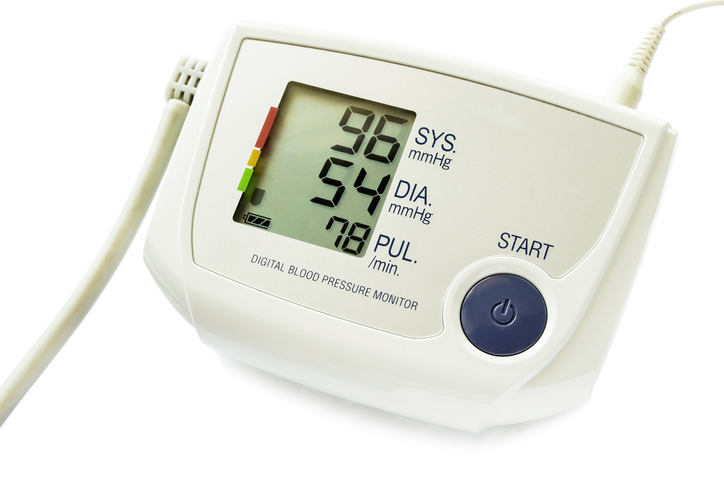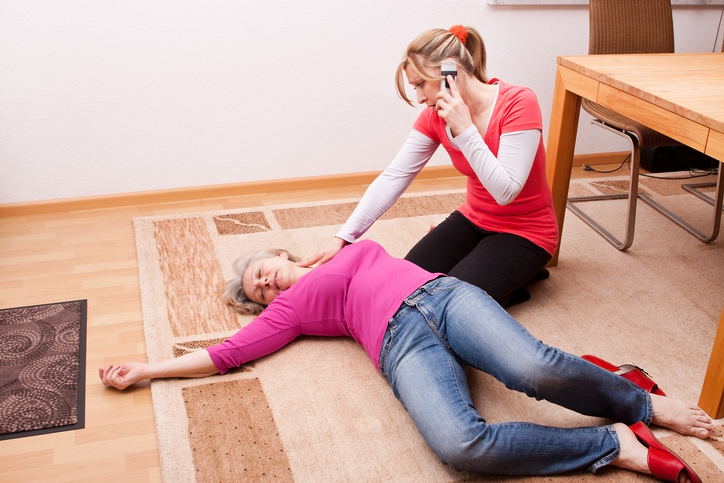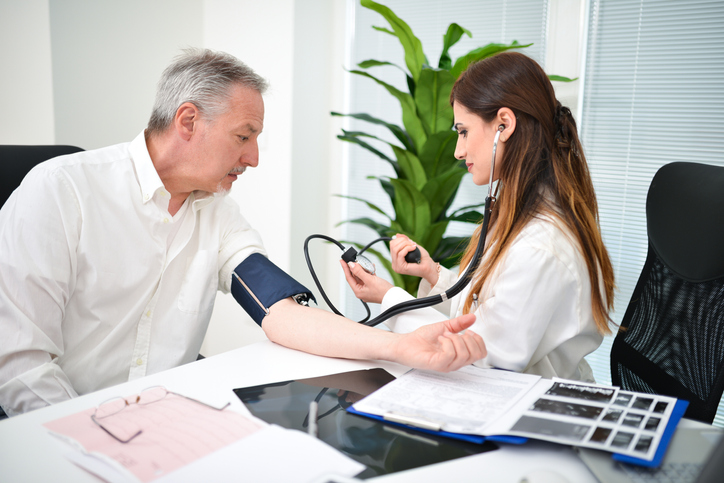Low blood pressure: What are the symptoms and risks of hypotension? Is 90/60 not enough?

Low blood pressure is a condition where the blood pressure falls below 100/60. Professionally, it is also called hypotension. Its cause is not fully understood. Sometimes it arises as a consequence of another disease.
Low blood pressure is professionally referred to as hypotension or hypotonia. It refers to a condition where blood pressure falls below 100/60 mmHg.
You often ask:
Is a pressure of 90/60 not enough?
What are the risks of hypotension and can it be responsible for a heart attack?
Can magnesium, lemon, herbs or other old wives' advice help with low blood pressure?
Blood pressure - in brief
Blood pressure is hydrostatic pressure. It's created by blood flowing through the blood vessels. It's pushed into the bloodstream, pushed in, pushed out by the heart. It works like a muscle pump.
It is formed by the pressure of the flowing blood on the wall of the arteries. It depends on the force of contraction of the ventricles and the resistance of the vessels or the volume of circulating blood.
For blood pressure, we know two concepts.
The first term is systolic blood pressure. Systolic pressure is the pressure created by the heart chambers when the heart contracts (systole), that is, when blood is ejected into the body's circulation. It is the highest value of blood pressure.
And diastolic blood pressure is present during relaxation of the heart muscle (diastole), when the heart sucks unoxygenated blood from the body into the right side. It is the lowest value of blood pressure.
The display on the blood pressure monitor is as follows:
Systolic blood pressure before the slash - 120/80 - after the slash diastolic blood pressure.
It is indicated in units of mmHg, which are millimeters of the mercury column. From the past, the indication in units of torr is also known.
In 1896, the physician Scipione Riva Rocci published a paper on measuring blood pressure with a sphygomanometer - a pressure gauge.
The method was perfected by the Russian surgeon Nikolai Korotkov, after whom the Korotkov Phenomena are named.

What blood pressure is low?
Low blood pressure is defined as when the blood pressure drops below 100/60 mmHg. However, it can also be lower.
Its long-term occurrence is also referred to as chronic arterial hypotension. In some cases, it occurs as a short-term condition. In this case, it is transient.
The values of normal and low blood pressure are given in the table below
| Name | Systolic blood pressure | Diastolic blood pressure |
| Normal | 120 | 75-80 |
| Lower normal | 90-110 | 60-75 |
| Low | 70-90 | 40-60 |
| Very low | 50-70 | 35-40 |
| Extremely low | less than 50 | less than 35 |
| Borderline blood pressure in children and adolescents then we are already talking about prehypertension | 120 | 90 |
| Normal blood pressure in children | 100 | 70 |
| Normal pressure in infants | 80 | 60 |
Normal and lower blood pressure is reported to prevent the development of cardiovascular disease. On the other hand, high blood pressure is a risk. Examples are atherosclerosis, myocardial infarction or stroke.
Division of hypotension
Hypotension can be primary, that is, essential. Then its cause is unknown. The second is secondary, which has a basis in another disease. It is its accompanying symptom.
Another form divides it into orthostatic and habitual.
Orthostatic occurs when there's a sudden change of position, especially from lying down to standing upright. Blood pressure drops very quickly and the body doesn't have time to react. It drops by 20 mmHg or more. Or the systolic blood pressure is below 90 mmHg.
This is when acute problems such as sudden weakness, dizziness, hot flushes or blackness before the eyes become apparent.
The person may lose consciousness for a short time. The cause is insufficient blood supply to the brain. In the horizontal position, blood pressure and blood supply to the brain stabilise.
The person regains full consciousness. Alternatively, weakness and fatigue may persist.
The risk of this orthostatic collapse (syncope) is trauma.
Habitual occurs without a known secondary cause. It occurs mainly when regulatory mechanisms are altered.
There is also so-called postprandial hypotension, which refers to a 20 mmHg decrease in systolic blood pressure after eating. The exact mechanism is not clarified. It occurs mainly in the elderly.
What are the causes of low blood pressure?
Primary (essential) hypotension does not have a precisely known cause.
Secondary (also referred to as symptomatic) is the result of another disease.
Often, lower blood pressure is encountered in young people.
Lower blood pressure is mostly experienced by teenage girls and young women.
It may be due to hormones or the menstrual cycle and blood loss.
Older people also have low blood pressure. The cause in this period is mainly due to reduced fluid intake(dehydration) and the simultaneous effect of medication on hypertension.
Interesting information in the diseases section:
High blood pressure
Lowblood pressure
Chronic low blood pressure also occurs in people who have altered hormonal nerve and vascular pressure regulation. Examples are asthenics or vagotonics. For them, the pressure also drops during stress, for example.
An asthenic is a psychologically withdrawn, introverted, sensitive, but inwardly richly experiencing person.
Vagotonics are people with a predominance of the parasympathetic nervous system, part of which is the nervus vagus.
Unlike orthostatic hypotension, reduced blood pressure values occur even when lying down. It does not arise from any other pathological cause.
Orthostatic hypotension - dizziness and weakness after a change of position
It is caused by a short-term decrease in blood pressure after a change of position, especially from lying to standing. The blood circulation does not have time to react. Blood accumulates in the lower limbs, the blood pressure drops.
If the blood pressure does not rise in time, the brain is insufficiently supplied with blood and oxygen. Problems such as weakness, dizziness to fainting, syncope (collapse) occur.
Once the blood pressure has stabilised and the blood supply to the brain has been restored, the affected person regains consciousness.

Other causes of hypotension
Hypotension also occurs due to other mechanisms, treatments or diseases. An example is hypotension in women during pregnancy.
Some secondary causes of low blood pressure in the table
| Main categories | Cause |
| Endocrine hypotension |
|
| Neurological disease |
|
| Kidney disease |
|
| Cardiovascular hypotension |
|
| Hypovolemic hypotension |
in insufficient fluid volume in the bloodstream
|
| Anaphylactic (allergic) reaction |
exaggerated allergic reaction of the body to an allergen
|
| Infectious and toxic hypotension |
|
| As a consequence of treatment |
|
| Other causes |
|
Pregnancy and hypotension
During pregnancy, low blood pressure occurs mainly in the first months. This is also due to the higher demand of the blood circulation on the work of the heart.
However, in the third trimester, a problem called inferior vena cava syndrome may be associated.
This is because the enlarging uterus with the fetus forms an oppression of the large blood vessels. This occurs mainly in the inferior vena cava, which carries blood from the lower part of the body back to the heart.
It occurs when the pregnant woman is lying down. This means especially during sleep or rest. Therefore, during this period, lying on the left side is recommended.
The pregnant woman experiences discomforts during this syndrome such as:
- palpitations due to an increase in heart rate (tachycardia)
- sweating
- nausea
- is pale
- her blood pressure drops
This condition is also risky from the point of view of the fetus, which is at risk from the reduced oxygen supply.
The risks of prolonged hypotension
Chronic hypotension is a problem mainly from the point of view of developing complications. Long-term lowering of blood pressure, and therefore reduced blood supply to the organs, results in various problems.
If the blood pressure is too low for a long period of time, it may be behind the development of organic brain damage. The brain is sensitive to proper blood supply. Brain cells require a constant supply of oxygen and nutrients.
In the 1960s, doctors George Milton Shy and Glenn Albert Drager associated hypotension with degenerative CNS damage. They described it as multisystem atrophy. It is a rare disease.
How does hypotension manifest itself?
Hypotension itself occurs as a symptom in a variety of problems. A person with low blood pressure may experience various subjective discomforts or show some outward changes.
In hypotension, the following difficulties or a combination of them occur:
- fatigue, malaise
- general weakness
- muscle weakness
- headache
- dizziness, light-headedness
- feeling of fainting
- cold skin
- cold skin
- chills - feeling cold
- sweat - cold sweat
- excessive sweating
- hot flushes
- nausea
- flashes before the eyes and visual disturbance, blurred vision or blackness before the eyes
- tinnitus or noise in the ears
- rapid breathing
- a quickening of the pulse and therefore of the heartbeat
- body tremors
- tingling sensations over the body
- a feeling of anxiety, fear
- fainting, collapse (syncope)
In collapse due to hypotension, there is a short-term loss of consciousness. If the disturbance of consciousness persists, another cause should be sought.

How is low blood pressure diagnosed?
In addition to taking a medical history, other investigative methods are used in the search for the cause.
The most important investigation is the measurement of blood pressure. As with hypertension, a single measurement is not enough. Repeated blood pressure measurements are needed to establish a diagnosis of hypotension.
A suitable choice is the Pressure Holter, which is a measurement of pressure over a 24-hour period. The pressure gauge and cuff are attached to the body and automatically measure pressure throughout the day. The person performs normal daily activities. He writes down certain events that affect the pressure.
In differential diagnosis, tests such as ECG, Holter ECG, ECHO, sonography, X-ray, CT, MRI, laboratory tests of blood or urine are also done. But also others.
Doctors from several disciplines cooperate in the diagnosis - general practitioner, pediatrician, internist, cardiologist, nephrologist, endocrinologist or other specialist.

Treatment - in general
The treatment is not medicamental, but rather regimen-based. It is important to modify the daily regime, diet and overall lifestyle. It is necessary to pay attention to a sufficient drinking regime.
What is the appropriate drinking regime, we mention in the magazine article.
As far as the drinking regime is concerned, it is adjusted and strictly regulated for people with certain heart or kidney diseases.
It is stated that it is advisable to increase the intake of salt in the diet or sodium (Na) or in the form of mineral waters. Of course, one should use common sense when salting and not overdo it unnecessarily.
In the case of people who are taking medication for hypertension, or also for the heart, a check-up with a doctor is necessary. The cause of hypotension may be the existing drug therapy. It is not advisable to discontinue medication arbitrarily and without the knowledge of a doctor.
Of course, long-term treatment of the primary disease is important.
Prevention of hypotension
When preventing difficulties, it is necessary to think about such a small thing as the correct technique of changing the position.
The change of position is carried out gradually:
- supine position
- sit on the bed
- lower the lower limbs from the bed
- it is advisable to drink a glass of water
- it helps to take a deep breath and exhale
- wait a few seconds
- stand up
The application of elastic socks or stockings is recommended. These are the same ones used for lower limb vein problems. They help in the return of blood from the legs to the upper half of the body.
The diet should be adjusted so as not to overload the body and digestive system with food. Smaller portions and more frequent meals during the day are advisable. Split into 5 courses.
Limiting heavy meals that have excessive fat and protein content. Coffee or tea (black, green, urological) stimulate the production of urine. Which does not mean that it will increase blood pressure. It is advisable to drink a glass of water at the same time.
There is also support in the form of vitamins, especially vitamin C and B complex.
Physical activity is included. Sufficient exercise, swimming, cycling or hiking and even walking in the fresh air are only to the benefit.
It is also necessary to think about getting enough rest and sleep. Avoiding stressful events and situations.
Final Tip:
Tip 1.
Try showering with alternating streams of cold and warm water. Work from the extremities towards the heart. The shower is finished with cold water.
Tip 2.
Not everywhere you can lie down...
- cross your lower limbs
- push your thighs together
- stretch the muscles of the lower limbs
- or toe lunges and stretching the calf muscles
Read also:
How to fight low blood pressure with lifestyle and food?
Even with hypotension, a professional examination and consultation with a doctor is of course necessary.
Diseases with symptom "Low blood pressure"
- Addisson disease
- Allergies
- Anaphylactic shock
- Aneurysm
- Angina pectoris
- Coarctation of the aorta
- Aortic diseases
- Arrhythmia
- Atrial and ventricular septal defect
- Atrial fibrillation
- Botulism
- Bulimia
- Burns
- Cardiac tamponade
- Cardiogenic shock
- Cardiomyopathy
- Cholera
- Concussion
- Congenital Cardiac Defects
- Ebola
- Ectopic pregnancy
- Endocarditis
- Erysipelas - rose
- Fallot tetralogy
- Gastritis
- Anorexia - Mental anorexia
- Heart failure
- Heart Tumors
- Heart valve disease
- Ileus - intestinal obstruction
- Endometritis
- Ischemic heart disease
- Hypotension
- Myocardial infarction
- Pneumothorax
- Puerperal infection - postpartum infection
- Pulmonary embolism
- Pulmonary hypertension
- Salmonellosis
- Shock - State of shock
- Spinal Cord Injuries
- Thromboembolic disease
- Typhoid fever
- Diabetic neuropathy
- Guillain-Barré syndrome
- Histamine intolerance
- Yellow Fever
Interesting resources
Related










